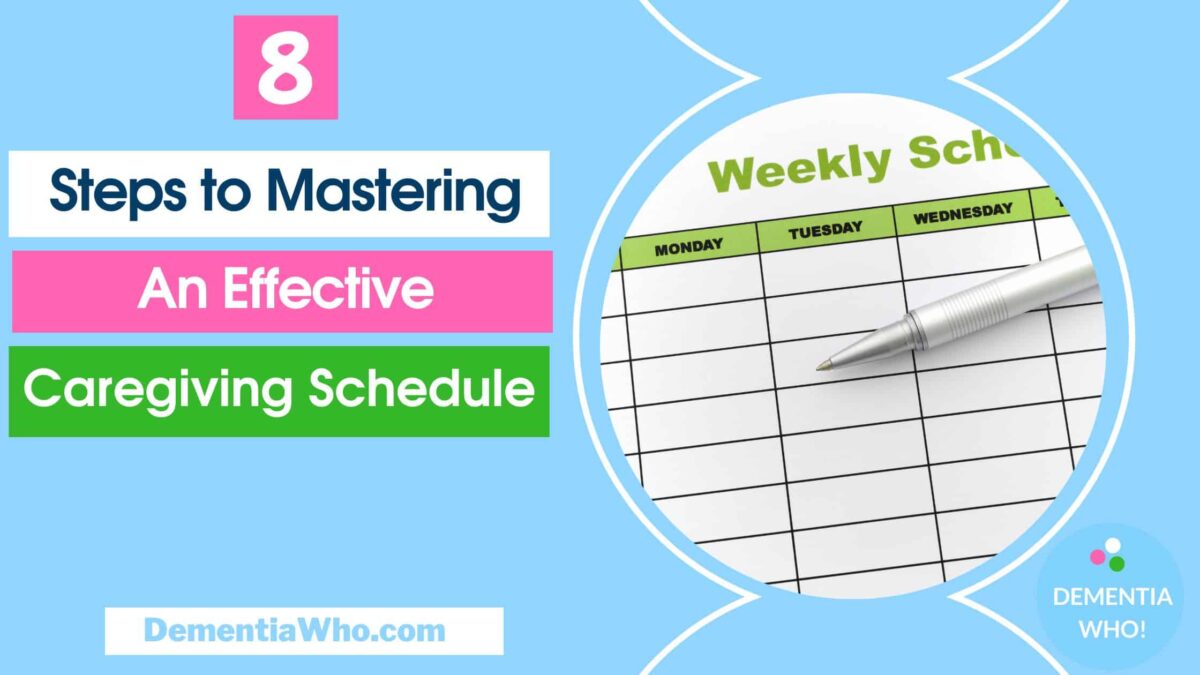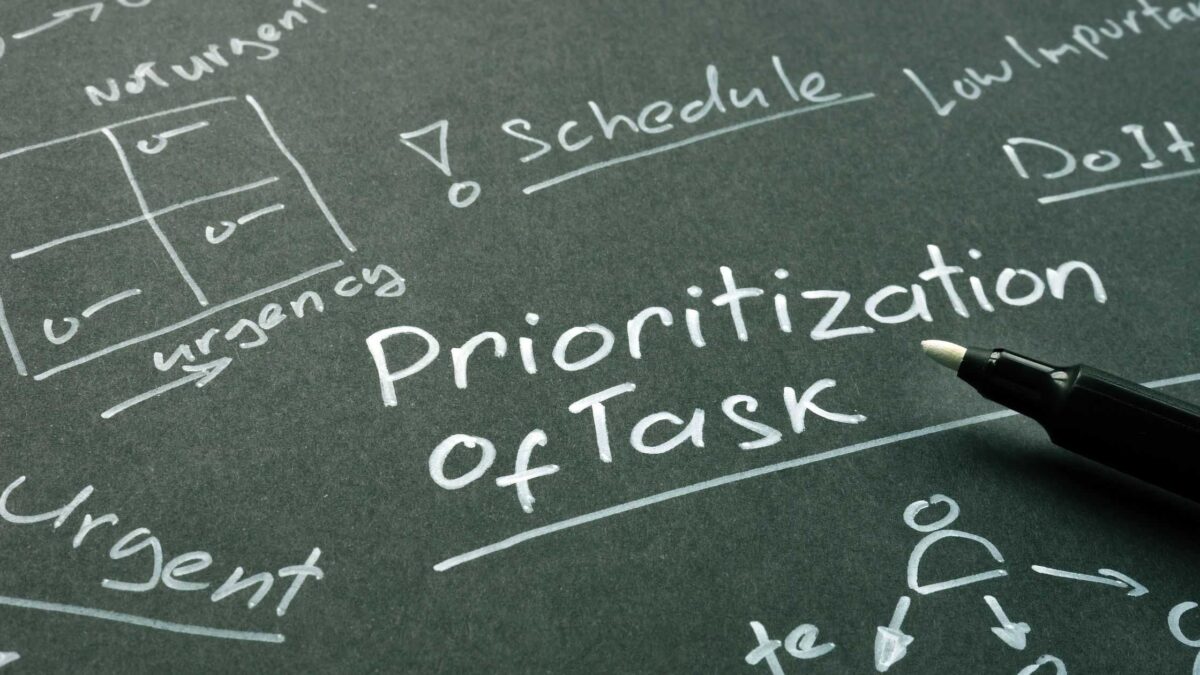Caregiving schedules are a great tool to have to help provide effective care and support your loved ones, particularly those with dementia. A structured routine helps you meet their needs. In this article, we will guide you through the process of creating a tailored caregiving schedule that considers the specific needs of your loved one.
We’ll show you how to make an effective caregiving schedule step by step. By using our strategies, you’ll create a routine that boosts care quality and improves your well-being as a caregiver too.

Why Caregiving Schedules Matter?
A structured caregiving schedule benefits both the caregiver and the person receiving care. It matters because:
- It brings a regular routine and lessens the stress of daily care. Creating a consistent routine is particularly beneficial for loved ones with dementia who may experience confusion and disorientation.
- A schedule reduces the challenges faced when different caregivers handle the care of a loved one. For example, if you have someone caring for your loved one during your working hours. It makes it so much easier for multiple caregivers to work together well. Each person knows their job, making everything smoother. Working together with a caregiving schedule as a reference means that your loved one is getting consistent care for their needs.
- A caregiving plan also helps the caregiver look after their own health. Sometimes you can get lost in caregiving mode, and don’t make time for yourself, but by using scheduling, you’re forcing yourself to make time to allow you to rest and recharge. This self care will benefit you by protecting the long-term health of your mind and body.
A structured caregiving plan has many upsides. It brings stability, reduces stress, makes teamwork better, and bolsters caregiver health. With a plan in place, giving care becomes more meaningful and fulfilling for everyone involved.
How to Create a Caregiving Schedule
Creating a caregiving schedule needs careful thought and a well-structured approach. The following 8 steps will help you master an effective caregiving schedule that works for you and your loved one.
Step 1: Understand Your Loved One’s Needs
To start, it’s essential to understand your loved one’s needs. Begin by observing their daily routines: when they eat, their dietary requirements, medication schedules, and personal care activities such as bathing, dressing, and grooming. Consider their emotional and physical needs, how their mental well-being is supported, and which social activities they enjoy. This thorough assessment will help identify their daily living requirements.
Understanding Medical Requirements
Knowing their health situation is vital, what do they need medically? This could be giving them medicine, knowing their medications, the dosage they need to take, equipment needs, medical devices used, and any special instructions for administration. It can also include keeping track of their health in a health record or helping with treatments or physical therapies.
Step 2: List All Tasks And Responsibilities
To make a good caregiving schedule, first, write down everything you need to do, including all the needs identified above. It’s helpful to put tasks into groups. For example, grouping tasks into categories such as personal care, household chores, medical appointments, and leisure activities. Use these groups to see easily what’s most urgent. By doing this, you can manage your day better.

Once you’ve listed all the tasks, it’s important to prioritise them. Start with the most critical needs, such as administering medication and addressing physical needs like toileting, nutrition, and personal care. Next, focus on activities that contribute to your loved one’s happiness and well-being, including social interactions and emotional support.
Create a list of all tasks and rank them by importance. This step is crucial for developing an effective caregiving plan, ensuring that your time is used wisely and all essential needs are met. Prioritizing tasks helps maintain the well-being of both the person being cared for and the caregiver, ensuring a balanced and comprehensive schedule.
Step 3: Allocate Time for Each Task
It’s vital to know how much time each task will take when you’re caring for someone. First, split each job into smaller parts. Consider how hard the task is, how much physical or mental work it needs, and if something might stop you from finishing quickly. Accurate time estimates help you fit everything into your day.
Try recording the time for your tasks over a few days. By doing this, you’ll see how long everything takes in reality. But, remember, no two caregiving situations are the same. Your time estimates may change as you learn what works best for you. Don’t forget to plan in regular breaks for yourself.
Step 4: Use Scheduling Tools
Using scheduling tools like digital calendars, planners, and apps can help caregivers stay organised and record your caregiving responsibilities & schedule.
Many caregivers love digital calendars. They are easy to use and always at hand. With reminders and colour codes, it’s simple to keep everything in order. Plus, they can be shared with family and friends, making teamwork easier. Digital calendars allow for real-time updates, making it easy to adapt and make changes to the schedule when needed
Some caregivers prefer using physical planners more. Physical planners, such as notebooks or whiteboards offer a hands-on way to plan tasks. Caregivers can write their appointments and to-do lists. This helps them remember important things without needing screens.
Whether you choose to use digital calendars, physical planners, or a combination of both, the key is to find the tools that work best for you. Consider your personal preferences, technological capabilities, and the level of detail you need to manage your caregiving schedule effectively.
Step 5: Coordinate with Other Caregivers
Effective communication with family members is key to successful coordination. Keeping everyone informed and updated regarding your loved one, on any changes in the caregiving schedule, and on specific needs or concerns is essential for a smooth caregiving process. Regular communication allows for the sharing of vital information and ensures that everyone involved is on the same page. There are some useful caregiver apps that allow you to share information digitally.
In some cases, collaborating with professional caregivers, such as home care providers or nurses, may be necessary to meet the complex needs of your loved one. Professional caregivers bring their own expertise and specialized skills to the caregiving team, enhancing the quality of care provided. Working in collaboration with them can help ensure that your loved ones’ needs are met and that all aspects of their care are addressed.
By working together and including these sharing responsibilities in your caregiving schedule, you can provide the best possible care and support for your loved one
Step 6: Include Flexibility in the Schedule
Being flexible is key in any caregiving plan. We all know that unexpected changes can happen at any time. Whether it is an unforeseen medical appointment or a sudden change in your loved one’s health condition, handling unexpected changes requires caregivers to be flexible and adaptable. By incorporating buffer times or leaving gaps in the schedule, caregivers can allow for ‘some’ unexpected changes, giving you time to try to address them.
Being able to adapt to emergencies is critical when caring for a loved one. This means caregivers having a plan in place, knowing who to contact in case of emergency, and having essential medical information readily available. Caregivers should consider including location details of emergency contact numbers, details of any medical conditions or allergies, medication lists in the schedule and having a hospital “go” bag.
Being prepared and proactively including these elements in a schedule can help caregivers respond swiftly and effectively to emergencies, ensuring the safety and well-being of your loved ones.
Step 7: Review and Adjust the Schedule Regularly
It’s important to review and adjust the caregiving schedule regularly. This ensures it works well & checks if it still fits your needs.
Consider the following factors during your reviews:
- Are all the necessary tasks and responsibilities included in the schedule?
- Is the timing of each task realistic and efficient?
- Are there any tasks that consistently take longer than expected?
- Are there any tasks that can be combined or delegated to other caregivers?
- Are there any changes in your loved ones condition or preferences that need to be accommodated?
By reviewing the schedule, you can find areas to improve and make the necessary adjustments to optimise the caregiving schedule.
Step 8: Ensure Self-Care Time for the Caregiver
Caring for someone can be draining. Resting is key to avoid burnout and to keep your health and mood up. Adding this into the schedule can help you to take that time. Make sure your breaks aren’t too short. They should be long enough to help you relax and feel better. Use this time for activities that make you happy. It could be music, books, walking, or meditation, pursuing hobbies, seeking support from friends or support groups, etc to help you maintain a healthy work-life balance.
Caring for yourself is not selfish, it’s key to your physical and mental well-being.
Balancing caregiving with personal needs is important to prevent burnout and maintain your physical, mental, and emotional well-being.
Remember: Self-care is not selfish!
Conclusion
An effective caregiving schedule offers numerous benefits for both the caregiver and the person receiving care. It enhances the quality of care provided and reduces stress by making tasks more manageable and less overwhelming. By following these 8 essential steps to mastering an effective caregiving schedule, and incorporating flexibility and self-care, caregivers can establish a solid routine that effectively supports their loved ones.





















